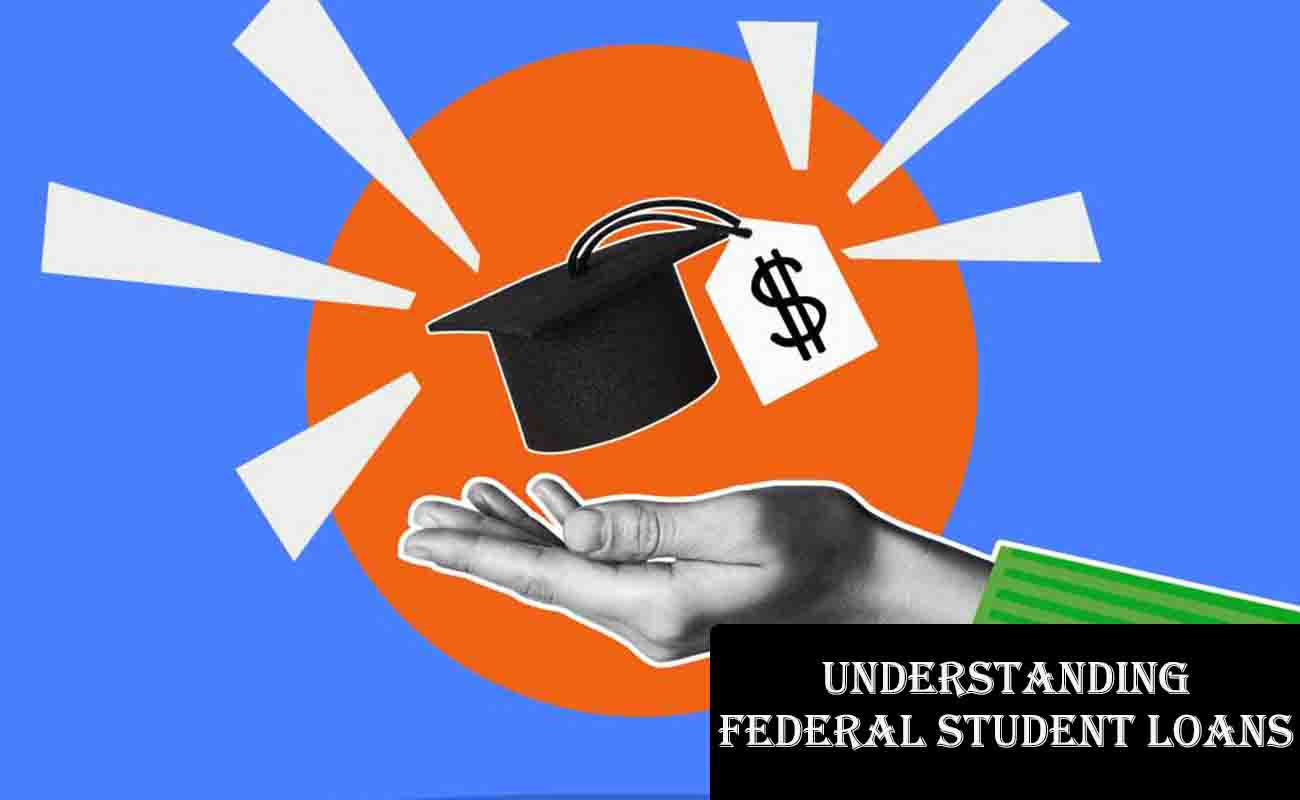Paying for college can feel like a maze, but I’m here to guide you through understanding federal student loans, a key piece of the puzzle. These loans are often the go-to for students and families because they’re backed by the U.S. government, offering benefits that make them more affordable than private loans.

Whether you’re a high school senior or a parent helping your child, this article will explain everything in simple terms so you can make informed decisions.
Federal student loans are funds you borrow from the U.S. Department of Education to cover higher education costs. Unlike scholarships or grants, which are free money, loans must be repaid with interest.
What sets federal loans apart is their borrower-friendly features, like fixed interest rates, flexible repayment plans, and even forgiveness programs. Let’s dive into the details to help you navigate this process with confidence.
What Are Federal Student Loans?
Federal student loans are money you borrow from the government to pay for college expenses, such as tuition, books, or room and board. You repay the loan over time, plus interest, which is a percentage of the amount you borrowed. Think of it as renting money—you use it now, but you pay a little extra for the privilege.
What makes these loans special is their structure. They’re designed to be more forgiving than private loans, which are offered by banks or lenders. For example, federal loans often have:
- Fixed interest rates: The rate stays the same, so your payments are predictable.
- No credit check for most: You don’t need a stellar credit score to qualify for many federal loans.
- Repayment flexibility: Plans adjust to your income, and you can pause payments if you hit tough times.
- Forgiveness options: Some programs forgive your debt after years of qualifying payments, especially for public service jobs.
Understanding federal student loans starts with knowing they’re a tool to make college accessible, but they come with a responsibility to repay.
Types of Federal Student Loans
There are four main types of federal student loans, each with specific purposes. Here’s a breakdown:
| Loan Type | Eligibility | Interest Rate (2025) | Key Features | Annual Limits (First-Year) |
|---|---|---|---|---|
| Direct Subsidized Loans | Undergraduates with financial need | 5.5% (fixed) | Government pays interest during school, grace period, deferment | $3,500 |
| Direct Unsubsidized Loans | Undergraduates and graduate students | 5.5% (undergrad), 7.05% (grad) | Borrower pays interest from disbursement; no payments required in school | $5,500 (dependent), $9,500 (independent) |
| Direct PLUS Loans | Parents and graduate/professional students | 8.05% + 4.228% fee | Credit check required; covers cost of attendance minus other aid | N/A (cost-based) |
| Direct Consolidation Loans | Borrowers with multiple federal loans | Weighted average | Combines loans into one payment; may extend term, increasing interest | N/A |
- Direct Subsidized Loans: These are for undergrads who show financial need through the FAFSA. The government covers interest while you’re in school, making it a cost-effective option.
- Direct Unsubsidized Loans: Available to undergrads and grad students, no need required. Interest starts accruing immediately, so you’ll owe more over time unless you pay it during school.
- Direct PLUS Loans: For parents (Parent PLUS) or grad students (Grad PLUS). They require a credit check and have higher rates, but they can cover full costs after other aid.
- Direct Consolidation Loans: These combine multiple federal loans into one, simplifying payments. Be cautious, as extending the term can increase the total interest paid.
Each loan serves a unique role, so you’ll want to choose based on your needs and eligibility.
Eligibility for Federal Student Loans
To qualify for federal student loans, you typically need to:
- Be a U.S. citizen or eligible noncitizen (e.g., permanent resident).
- Have a valid Social Security number.
- Be enrolled or accepted in an eligible program at a school participating in federal aid.
- Maintain satisfactory academic progress (e.g., passing classes).
For Direct Subsidized Loans, you must demonstrate financial need via the FAFSA, which calculates your Expected Family Contribution (EFC). Other loans, like Unsubsidized or PLUS, don’t require need but still use the FAFSA to determine eligibility. PLUS Loans also require a credit check, and adverse credit may need an endorser.
How to Apply for Federal Student Loans
Applying for federal student loans is straightforward if you follow these steps:
- Create an FSA ID at studentaid.gov. This is your digital signature for federal aid forms.
- Gather Documents: You’ll need your Social Security number, tax returns, W-2s, bank statements, and family financial details.
- Complete the FAFSA at studentaid.gov/h/apply-for-aid/fafsa. Submit early (starting October 1) as some aid is first-come, first-served.
- Review Your Student Aid Report (SAR): After submitting, check your SAR for errors.
- Accept Your Aid Offer: Your school will send a financial aid package. Accept only the loans you need.
- Complete Entrance Counseling at studentaid.gov/entrance-counseling. This educates first-time borrowers on loan terms.
- Sign the Master Promissory Note (MPN) at studentaid.gov. This legally binds you to repay.
Your loan will then be disbursed to your school, with any leftover funds refunded to you for other expenses.
Repayment Options for Federal Student Loans
Repaying federal student loans is flexible, with several plans to fit your situation:
| Repayment Plan | Duration | Payment Structure | Best For |
|---|---|---|---|
| Standard | 10 years | Fixed monthly payments | Those who want to pay off quickly |
| Income-Driven (e.g., PAYE, IBR) | 20-25 years | Based on income and family size; possible forgiveness | Those with low income relative to debt |
| Extended | 25 years | Fixed or graduated payments | Those needing lower monthly payments |
| Graduated | 10 years | Payments start low, increase every 2 years | Those expecting income to grow |
- Deferment: Pause payments if you’re in school, unemployed, or facing economic hardship. Interest may accrue on unsubsidized loans.
- Forbearance: Temporarily pause or reduce payments for financial difficulties. Interest accrues on all loans.
You typically start repayment 6 months after leaving school (grace period). Contact your loan servicer via studentaid.gov to choose a plan.
Benefits of Federal Student Loans
Federal student loans offer advantages that make them a safer choice:
- Fixed Interest Rates: Predictable payments over the loan term.
- No Credit Check for Most: Subsidized and Unsubsidized Loans are accessible without a credit history.
- Flexible Repayment: Income-driven plans and deferment/forbearance options.
- Loan Forgiveness: Programs like Public Service Loan Forgiveness (PSLF) forgive debt after 10 years of qualifying payments for public sector workers (usnews.com).
- No Cosigner Needed: Unlike many private loans, most federal loans don’t require a cosigner.
These features make federal loans a better starting point than private loans, which often have variable rates and fewer protections.
FAQs About Federal Student Loans
- What’s the difference between subsidized and unsubsidized loans?
Subsidized loans are need-based, with the government paying interest during school. Unsubsidized loans accrue interest from disbursement, and you’re responsible for it. - Can I get a federal loan with bad credit?
Direct Subsidized and Unsubsidized Loans don’t require a credit check. PLUS Loans do, but an endorser can help if you have adverse credit (usnews.com). - When do I start repaying?
Most loans have a 6-month grace period after leaving school or dropping below half-time enrollment. Interest on unsubsidized loans accrues during this time. - Can I consolidate my loans?
Yes, a Direct Consolidation Loan combines multiple federal loans into one payment. Apply at studentaid.gov. - Are there borrowing limits?
Subsidized and Unsubsidized Loans have annual and lifetime caps based on your year and dependency status. PLUS Loans cover the cost of attendance minus other aid.
Conclusion
Understanding federal student loans is essential for navigating the cost of college. These government-backed loans offer low fixed rates, flexible repayment options, and forgiveness programs, making them a smarter choice than private loans.
By borrowing only what you need and exploring grants, scholarships, and work-study first, you can keep your debt manageable. I encourage you to approach borrowing thoughtfully. Federal student loans are a powerful tool to invest in your education, but they’re a commitment.
